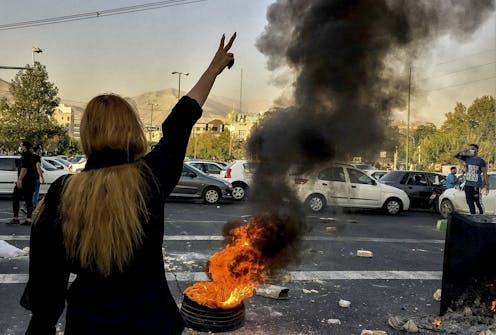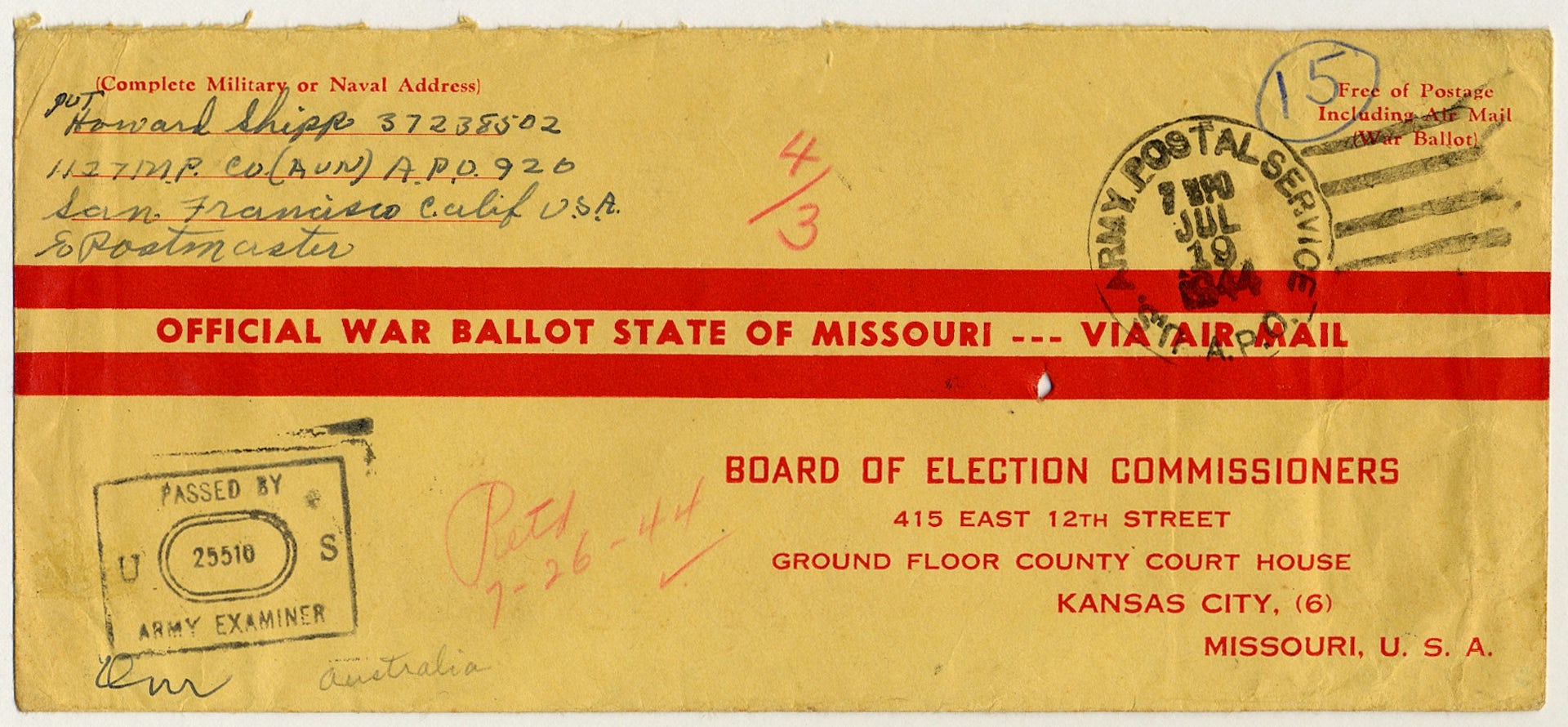The veil in Iran has been an enduring symbol of patriarchal norms – but its use has changed dependin
The veil as a symbol of oppression has once again moved to center stage in Iran, but it’s important to know about the history of veiling – and mandatory unveiling.

In images of the uprising that followed the death of 22-year-old Mahsa Amini on Sept. 16, 2022, perhaps the most iconic ones, aside from that of Amini herself, are those of unveiled Iranian women photographed from behind, facing police barricades or raising a fist at the scene of mass protests.
The wide use of images of Iranian female protesters, without the headscarf, in the Western media highlights how the veil can often be seen as the single most important measure of women’s rights and well-being.
Indeed, oftentimes outside of Iran, wearing a veil is seen as oppression – and its removal as emancipation and freedom. This understanding, however, fails to take into account the veil’s broader symbolism and ignores the complex history of mandatory veiling and unveiling in Iran in the 20th and 21st centuries.
Islamic Republic and the veil
During the 1979 revolution, veiling became a symbol of resistance to the Pahlavi monarchy that ruled from 1925 to 1979. For many during the revolution, the veil was a symbol of authentic national identity. It was used to push back against the Westernization and erosion of Iranian values that ignited the revolution.
After the Islamic Republic, led by Ayatollah Ruhollah Khomeini, came to power, the veil became compulsory. Since then, certain forms of veiling – such as donning the chador, a cloaklike garment that covers the entire body and is required of women visiting a mosque in Iran – have come to be seen as signaling affiliation with or support for the Islamic Republic.
Less comprehensive forms of veiling, such as a rusari, or head scarf, and the knee-length tunic or coat known as a rupush, are understood as signs of minimum cooperation and potentially a rejection of the norms of the Islamic Republic. These types of veiling allow the wearer to adjust the amount of hair shown and the fit and the length of the tunic. Women accused of “bad hijab,” as Amini was, are typically those adopting this form of veiling.
However, in pre-1979 Iran, wearing the veil did not necessarily mean that a woman was straightforwardly “religious.” Instead, it could signal a variety of other social meanings, such as being conservative, upholding traditional values or an indication of personal modesty, among others.
Pahlavis and the era of modernization
Indeed, four decades before the Islamic Republic was established, the Shah of Iran, Reza Pahlavi, had forced women to remove their veils through the Mandatory Unveiling Act of 1936.
Pahlavi, who installed himself as king in 1925 after overthrowing the Qajar monarchy, viewed the entry of unveiled women into public spaces as an essential component of modernity, modeled on Western norms.
As a consequence of the 1936 act, women were prohibited from veiling in public. Refusal to comply was met with sometimes violent enforcement and removal of the offending garment. While men too were instructed to wear European-style trousers, suits and hats, it was women’s bodies that were at the nexus of these reforms.
Pahlavi’s complex project of modernization included reforms to law and education, and the end of gender segregation of many public spaces. The reforms offered women greater rights and protections should their husbands choose to divorce them, and opened up new educational opportunities. But Pahlavi viewed the presence of unveiled women in public space as essential to signaling these changes.
My book “Burying the Beloved” examines how ideas about women’s personhood and rights were explored during this period by novelists in Iran, particularly through stories about marriage. This era saw the publication both of the first novel by a woman and the first female protagonist in Persian fiction. Novels of this period revealed social anxieties around the legal reforms that gave women larger roles in society and more rights in marriage.
Pahlavi abdicated in 1941, during World War II, and his son Mohammad Reza Pahlavi, who ascended the throne, adopted a more lenient attitude toward this law. He did not rescind it, but neither did he violently enforce it. At the same time, the modernity his regime promoted was signaled by a cosmopolitan secularism – no veiled woman could hope to advance in the diverse areas of society, politics and economy patronized and controlled by the monarchy during his rule, which lasted until 1979.
Social and familial pressures reigned over women’s veiling, accompanied by changing cultural mores facilitated by virtually wholesale adoption of Western sartorial styles, cinema and other media.
Dying to show their hair?
Over the past few weeks, I have repeatedly seen comments on news articles that insist, “Women in Iran are literally dying to show their hair!” But a rejection of the head scarf in the context of these protests is not a simple demand for one personal freedom.
Instead, it should be understood as a rejection of many things. Protesters in Iran are pushing back against an oppressive regime that has refused to brook any dissent and has destroyed voices for reform through imprisonment, exile or death. They are also pushing back against a long history of laws, beginning before the 1979 Revolution, that have used women’s bodies as symbols of political ideology.
The veil that is being removed is therefore not an insistence only on the right to personal freedom and expression – though it may be that for some who are removing it – but also a rejection of patriarchal norms that have animated both the pre-revolutionary regime and the Islamic Republic.
Amy Motlagh does not work for, consult, own shares in or receive funding from any company or organisation that would benefit from this article, and has disclosed no relevant affiliations beyond their academic appointment.
Read These Next
Why the Pittsburgh Post-Gazette’s closure exposes a growing threat to democracy
When reputable local news outlets close, fewer people vote and get involved in local politics, and misinformation,…
Americans have had their mail-in ballots counted after Election Day for generations − a Supreme Cour
29 states allow mail-in ballots postmarked by Election Day to be counted days after an election. A case…
ICE killing of driver in Minneapolis involved tactics many police departments warn against − but not
Police departments have changed their policies regarding use of force over the years to protect life,…





